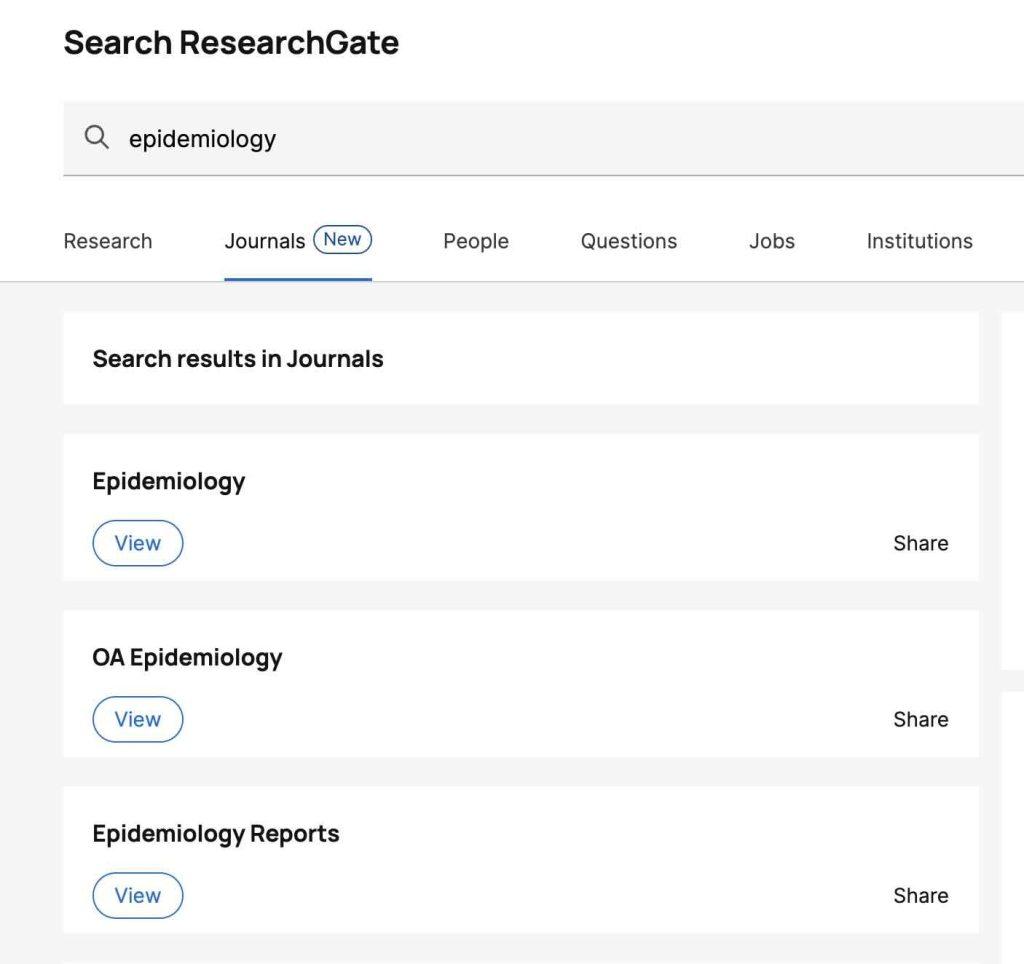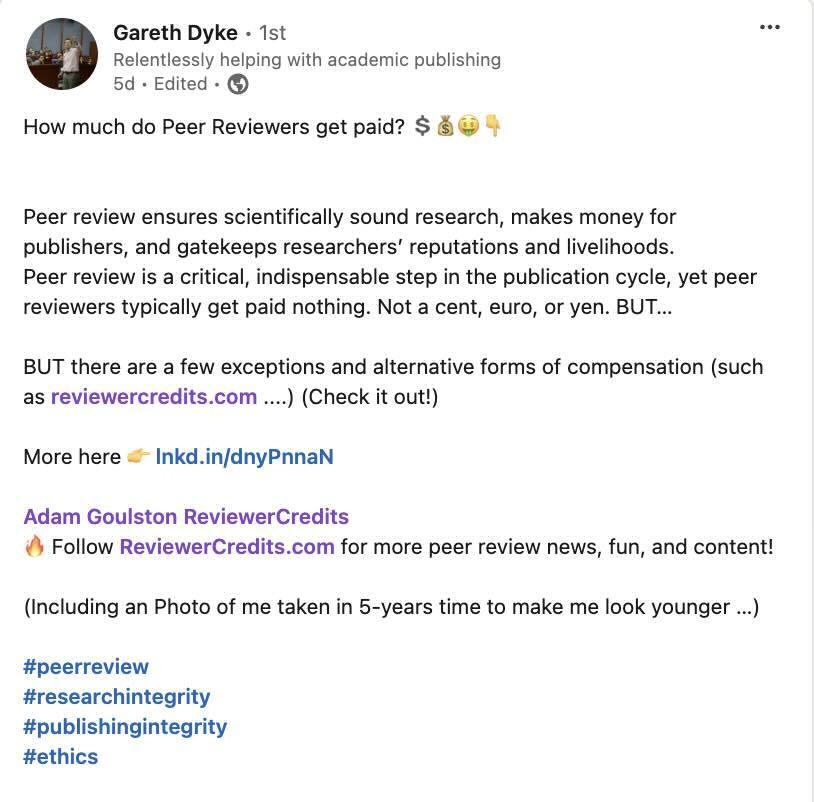
Finding peer reviewers for scholarly publications is often an added burden for editors after screening, checking ethics statements and plagiarism, editing, and all the other steps. For specialized research areas, it’s even more challenging.
However, a good plan of attack can significantly lighten this burden. Your plan should use tools efficiently, tap your networks, and weave in new technology.
Using methods straight from journal editors, including Gareth Dyke, PhD, our Academic Director, this article gives you conventional and new tips. You’ll also learn about a service that screens and introduces specialized peer reviewers, saving time and hassle.
Apply these methods to find reviewers who want to review and who will do an excellent job for your journal, ensuring research integrity and a fluid publication cycle.
The challenge of finding qualified reviewers
Journal editors face an ongoing challenge in finding peer reviewers. This burden comes as journal submissions are booming, with some 2,000,000 submissions requiring peer review each year. One peer review takes the reviewer an average of 6+ hours, and reviewers usually aren’t compensated for this work.

Gareth Dyke, PhD Editor-in-Chief, Historical Biology
Even after screening, editing, checking ethics statements, scrutinizing for conflicts of interest (COIs), and authorship declarations, finding reviewers is “the hardest part of the job,” says Dr. Dyke, Editor-in-Chief of the Taylor & Francis journal, Historical Biology. That’s because of the increasing difficulty securing knowledgeable reviewers who have time, can do conscientious work, and will meet the deadline. Many potential reviewers simply decline, or worse, say they’ll do the job and then don’t do it.
In locating reviewers, journal editors must consider researchers who have:
- Expertise: Active in a specific or overlapping area of research.
- Availability and commitment: Can make time and stick to the deadline.
- No bias or COIs: Have no biases (regional, institutional, etc.) or potential conflicts (e.g., worked with or supervised one of the article authors).
- Independent insight: Can provide unique thoughts and critique in the review.
- Diverse perspectives: Represent varied geographic areas, genders, career stages, and backgrounds.
- No redundancy or burnout: “Over-asking” the most responsive reviewers might limit perspectives and tire them out. Many reviewers struggle with fatigue.
- Track record: Past reviews show thoroughness and constructiveness.
- Incentive: Peer review is typically voluntary, but recognition and other incentives can motivate reviewers.
All these factors mean editors must send out more invitations, sometimes upward of 40 emails to secure one reviewer, according to Dr. Dyke.
The challenge is clear, but you can overcome it. Use these methods (especially the last one) to lighten the load and find peer reviewers for your journal more effectively.
Use search tools and databases efficiently
Search tools are, by far, the most common tool for modern journal editors seeking peer reviewers. These tools are standalone or embedded in manuscript submission systems and indexes, and they increasingly incorporate artificial intelligence (AI).
Here are the main ones and some up-and-coming ones.
Editorial management tools
These are peer review-related systems contained within editorial management platforms.
ScholarOne, This platform is an interface for editors. This system pops up candidate researchers based on keywords and publishing records. The interface pulls down under the paper with a series of reviewers, based on keywords and previous publications.
Aries Systems’ Editorial Manager has similar search functionality, while the open-source Open Journal Systems platform uses searches on OpenAlex and Google Scholar.
These tools are effective, but they do take time and some trial and error to accomplish what you want from them. You’ll also need a working knowledge of how to use them (which takes time and practice). For “mega-journals” (e.g., Scientific Reports and PLOS ONE) plugged into this system, more weight is given to the editor’s experience and knowledge, and, therefore, fewer checks and balances are in place if unsuitable reviewers agree to take on papers.
Indexes and search tools
Some dedicated tools focus specifically on peer review. Popular ones include:
- Journal/Author Name Estimator (Jane): A free tool for biomedical and life sciences research, using PubMed data.
- Reviewer Recommender: Uses algorithms to match manuscripts with suitable reviewers.
- Prophy: This AI-driven provider and Reviewer Credits partner has a suite of tools for matching academic papers with reviewers.
These tools aren’t free; your journal or publisher will need a subscription, and you might also have access to publisher-based databases like the SpringerNature Reviewer Finder.
General academic databases are also popular and easily accessible ways to track down candidate reviewers.
- Web of Science: This index covers all disciplines and offers a Researcher Search tool to editors and publishers with paid subscriptions. Use research institutions or authors’ names/ORCID iDs linked to relevant articles, excluding anyone who has collaborated with the paper’s author or been affiliated with the same institution in the past 5 years. Subscription access also allows detailed keyword searches within the Web of Science Core Collection and affiliated databases like the SciELO Citation Index, filtering results by, for instance, topic, publication date, citation count, and authors’ publication counts.
- Google Scholar: A widely recognized free research index where journal editors can do focused keyword searches and filter results by content type and publication date.
- PubMed: For journals in the biomedical and life sciences, editors can use targeted keyword searches in PubMed and related tools like PubReMiner and Anne O’Tate.
- Scopus: An institutional subscription to this abstract and citation database lets you do targeted searches within its extensive index.
For more tools that help you locate reviewers and assist in the range of journal editors’ tasks, read Digital Tools & AI Tools for Journal Editors here in the Reviewer Credits resources.
Authors’ cover letters and reference sections
Two valuable resources for finding reviewers require no searching at all – they’re delivered to your desk/desktop. And even if they’re not the best fit for the current manuscript, you can keep them in mind as future reviewers for other submissions, depending on other ethical considerations and publisher guidelines.
Suggested reviewers in cover letters
Authors submitting manuscripts for consideration often suggest potential peer reviewers in their cover letters. These suggestions can save you time. The best suggestions include diverse and knowledgeable candidates who are free of bias and COIs.
However, journal editors should carefully check credentials and potential connections because the lists may also include friends, colleagues, and countrymates. “We’ve even had situations,” Dr Dyke notes, “where authors have made up email addresses to mimic well-known colleagues in their field to control the peer review process.”
Some publishers and journals, thus, also prohibit using authors’ suggestions because of these ethical implications.
Submitted manuscripts’ references/citations
The reference sections of submissions are helpful for targeting specialized researchers, as they naturally reference materials related to the manuscript in front of you.
Authors of recent and similar publications cited in the manuscript are also researchers you can approach with a review request. However, contacting reviewers this way takes time – it often involves navigating search tools, such as Google Scholar and departmental websites, as you verify the researcher, track their details, and seek a valid email address.
How a work is cited may also indicate potential conflicts. For example, a strongly negative citation might imply the author doesn’t think so highly of the author, or vice versa. In contrast, a positive citation in an article could imply a friendly relationship and, therefore, an easier ride if that researcher is selected as a reviewer.
Editors need to read between the lines for these subtle issues.
Save suggestions and references for future use
While it’s important to be aware of potential COIs and avoid sending review requests to colleagues or collaborators the author lists, this doesn’t mean you can’t contact them for other reviews. Keep them on file.
Policies vary among journals and publishers. Some publishers, such as Taylor & Francis, prohibit the use of author-deselected peer reviewers (such as those flagged in a cover letter). However, other publishers, like de Gruyter, encourage their editors to use author-recommended reviewers.
When examining reference sections, note individuals relevant to your journal’s field who could be good reviewers for similar papers. Keep them on file, too. They might not be a good fit or might have a conflict concerning the current manuscript, but they could be helpful in the future.
Add early-career researchers to the mix
Editors shouldn’t only focus on well-established, senior researchers. Younger researchers, while often perceived as less-effective choices for peer review, can bring great value, including:
- Up-to-date knowledge of methodologies, technologies, and theories
- Current perspectives on emerging trends and standards in their field
- Being well-versed in recent literature, which is especially useful for reviewing cutting-edge research
- Eagerness and availability
- Willingness to learn
Publishers often encourage their editors to search for both senior and junior researchers when selecting peer reviewers. This approach can yield more balanced and useful comments.

This is because, while a senior researcher might have more in-depth, field-specific knowledge, they may also have more time commitments (such as teaching, administration, and student supervision) that prevent them from reviewing or keeping deadlines. For this reason, some publishers (such as IOP Publishing and ACS Publications) have schemes for experienced researchers to mentor younger colleagues during the review process.
Journal editors can access these schemes in their search for reviewers, adding them to the manuscript evaluation process to provide training and experience. If a younger researcher has demonstrated good work, they’ll be asked again later.
A mentoring/training model like this is an effective approach to acquiring reviewers. Up-and-coming researchers usually haven’t published much and may not appear via standard search methods like those mentioned above. They want to gain peer-reviewing experience, but they’re often unsure how to start. Reaching out to reviewers within your pool who are team leaders and asking them to recommend younger researchers is a good way to find them. You can also create programs or networks to attract early-career researchers who can work on your journal.
We often get requests from younger researchers asking to act as peer reviewers or even to join our editorial board, says Dr Dyke. We refer them to Taylor & Francis peer review training content or to our Reviewer Credits’ Peer Review Power Up’ course.
TAKE DR. DYKE’S PEER REVIEW POWER UP COURSE
Incorporating young researchers into the peer review process benefits the research community by providing fresh and up-to-date perspectives. It also contributes to the professional development of these researchers. These efforts foster a more engaged and knowledgeable academic community.
Access your editorial board
Your journal’s editorial board has been built up over time and contains experts specifically interested in the research the journal publishes. An editorial board can, therefore, be instrumental in the review process, from providing reviewer recommendations to directly peer-reviewing submissions.
Editors-in-chief have been instrumental in assembling the board. You can also ask board members to perform peer review in more precise subject areas or if your journal covers just one research area.

The board also can be a great resource for locating potential early-career peer reviewers. Ask your editors about helpful researchers who they, or a colleague, have collaborated with.
Dr. Dyke also suggests that journals can also collaborate with academic institutions to connect with and train early career researchers; for example, by providing reviewer training courses together with university libraries. Editorial board members often run research groups, which can be accessed to provide further subject-area-specialist peer reviewers. Ask your editorial board members to keep you informed about their graduate students.
You can also encourage board members to network at conferences. Many journals and publishers can even provide support for editorial board members to attend conferences, which can be with the intent of finding new reviewer information.
You’re all on the same team, so use your board to advance the quality of research the journal publishes.
Previous contributors to your journal
Authors who have already published in a journal are a key resource when you’re searching for peer reviewers. These researchers should already be in your database. Still, it’s well worth searching your own journal using keywords to identify researchers with similar interests, perhaps in a parallel field or with specific skills (such as statistics).
Similarly, reviewers who decline requests (a common occurrence you probably grapple with) can also be asked to recommend alternatives. “They’ll do this, sometimes,” Dr. Dyke says. “But if they don’t, a form email in response to a rejected request to review saying thanks and asking for 4-5 names and email addresses for potential alternatives is a good idea.”
A template for such requests can be proposed, aimed at maintaining goodwill and open communication channels. For example:
Thank you so much for replying to our request that you serve as a peer reviewer. It’s unfortunate that you cannot accommodate us this time, but we would appreciate some possible alternative names with email addresses.
Social media and networks
Editors can use social media to find peer reviewers in several effective ways. Social media platforms provide a vast network of professionals and academics that can be tapped into as potential peer reviewers. Here’s how editors can leverage social media to find peer reviewers:
Join relevant academic and professional groups
Join groups, communities, or forums related to your journal’s subject area. Create an account and be active on ResearchGate and Academia and on general platforms like LinkedIn and Facebook. You’ll often find groups of researchers, academics, and professionals who are potential peer reviewers.

Join in discussions and observe active members. You’ll soon recognize who’s active in their field and be able to see their communication style and level of enthusiasm.
Use hashtags and keywords
Search for specific hashtags or keywords relevant to the journal’s focus area. For example, searching for hashtags like #NeuroscienceResearch or #MachineLearning can help editors find active researchers in those fields. Engaging with these posts can open up conversations that may lead to identifying potential reviewers.

Leverage professional profiles and research networks
Use the search functions on key platforms to find professionals with expertise in the relevant areas. On LinkedIn, for instance, editors can search for people with certain skills or affiliations. On ResearchGate, editors can see researchers’ profiles, their publications, and areas of expertise, making it easier to identify qualified reviewers.
Announce calls for reviewers
Post a call for reviewers on the journal’s social media pages or relevant academic groups. Clearly state the criteria for reviewers and what areas of expertise are needed. This can attract interested professionals who follow the journal or are part of the academic community.
We are seeking qualified peer reviewers to assess papers submitted to Historical Biology, especially in the following subdiscipline…
Engage in direct outreach
Reach out directly to researchers who have expertise in the relevant field. Personalized messages that acknowledge the researcher’s work and explain why their expertise would be valuable for peer reviewing can be effective in recruiting reviewers.
Dear Dr. Dyke,
Having read your recent contribution to Historical Biology, we are eager to add you to our peer reviewer database…
Follow conferences and academic events
Many conferences have dedicated hashtags and live updates on social media. Following these can provide insights into who is presenting and what topics are currently being discussed. This helps identify active researchers who might be suitable as peer reviewers.
Social media analytics tools
Use tools like X/Twitter analytics, LinkedIn analytics, and third-party tools such as Altmetric to analyze engagement with posts related to specific academic topics. These tools can also show you active and influential users in certain research areas.
Monitor competitor journals and academic societies
Follow competitor journals and relevant academic societies on social media to see who’s engaging with them. Researchers who are actively participating in discussions or contributing content likely have the expertise needed for peer review.
Social media is a tool that keeps on giving. The more you put yourself out there, support others, and provide value, the more value you’ll find coming back to you. Peer reviewers are a big part of that value.
You’re now equipped with tools and tactics to help you find peer reviewers efficiently, but one more tool can help still make this process much faster and less painful.
The secret weapon for journal editors: A platform that supplies motivated, eager, qualified reviewers
It’s called Reviewer Credits, and you’re here now. Reviewer Credits streamlines the process of journal editors and publishers identifying suitable peer reviewers. This platform connects journals with a global database of experts who have signed up for the service, are ready to review, and are recognized and rewarded for their contributions.
Peer review can be a thankless task, and recognized and rewarded reviewers are motivated reviewers.
Reviewer Credits raises the quality and efficiency of your peer review process, helping you achieve timely publication and robust article validation.
Key features for journal editors
- Certification of reviews: Each review is certified, adding credibility and attracting conscientious, high-quality work.
- Transparent metrics: Access detailed metrics on reviewer performance and activity to help you make informed choices.
- Global reach and peer equity: Tap into a worldwide network of professionals across various fields, expanding your reviewer pool and helping you balance geographic and gender representation.
- Reward reviewers: Reward them through recognition and Credit Points, which they can use for editing, statistical analysis, and other benefits to advance their careers.
Reviewer Credits can accelerate and transform your peer review process. Start building your community of dedicated reviewers – learn more here.
